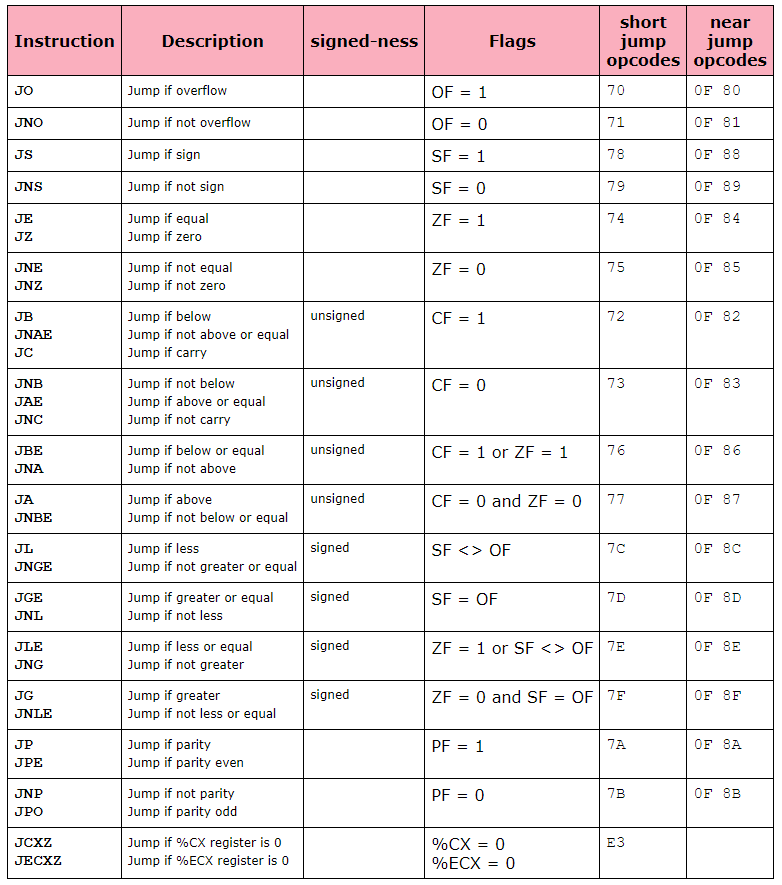Instructions / opcodes¶
Warning
It's important to know that you can't study all instructions. Use an x86 instruction reference instead.
- They are executable statements
- Translated to machine language
- Executed at runtime
- The opcode is a part of the instruction that specifies the operation to be performed.
- Instructions always act from the second (source) operand into the first (destination) operand.
Syntax¶
[label] [opcode] [destination operand], [source operand] [;comment]
Note: labels and comments are optional
Example¶
Types of operands¶
Immediate Operandscan also be considered constants. These are fixed values like we had the0x5fin the above example.Registerscan also be operands. The above example showseaxas a register where the immediate operand is stored.Memory operandsare denoted by square brackets, and they reference memory locations. For example, if we see[eax]as an operand, it will mean that the value in eax is the memory location on which the operation has to be performed.
MOV¶
Copies data from 2nd into 1st operand
Example¶
mov eax, ebx; Copies the value of ebx into eax
ADD and SUB¶
Adds or subtracts data from 2nd into 1st operand. Stores the calculated value into the 1st operand.
Example¶
sub eax, 20;
LEA¶
Loads the effective address from the 2nd into 1st operand. The source operand is a memory address (offset part) specified with one of the processors addressing modes; the destination operand is a general-purpose register.
Example¶
lea eax,[variable1] ;use [] for dereferencing
INC and DEC¶
Increase or Decrease the content of the operand by 1
Example¶
JMP¶
Jumps to a label.
Example¶
CMP¶
Compares the values of both operands. Acts by subtracting the operands, except the result is not stored. It only sets flags based on the comparison.
Example¶
cmp eax, 10
Condtional jump instructions¶

Disassembly example¶
When looking at it in a disassembler, we will see:
040000: address where the instruction is located.b8: opcode of the instruction mov eax5F 00 00 00indicates the other operand0x5f.
Please note that due to endianness, the operand 0x5f is written as 5f 00 00 00, which is actually 00 00 00 5f but in little-endian notation.